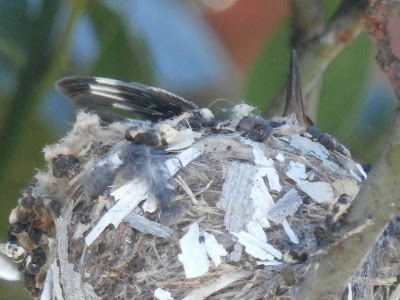Monday, February 29, 2016
Sunday, February 28, 2016
Friday, February 26, 2016
Wednesday, February 24, 2016
Tuesday, February 23, 2016
Sunday, February 21, 2016
Thursday, February 18, 2016
Beaks
For the past week I have been seeing the mother hummingbird perched on the edge of her nest-- making poking motions as if feeding young:
Then a couple of days ago I caught a glimpse of tiny baby beaks-- and just now, I managed to photograph them!
Then a couple of days ago I caught a glimpse of tiny baby beaks-- and just now, I managed to photograph them!
Tuesday, February 9, 2016
Friday, February 5, 2016
Thursday, February 4, 2016
Starlings
These birds have some odd relevances to my academic life. First, their presence in America has been attributed to an obsessive Shakespeare fan, though the Shakespeare connection may be nothing but a legend. Second, they may be capable of recognizing recursion in sound sequences, an ability generally considered unique to humans and essential to language.
Subscribe to:
Posts (Atom)

































